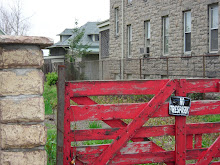
School of Visual Arts
http://artcriticism.sva.edu/index.htmlMFA Art Criticism and Writing
The practice of criticism involves making finer and finer distinctions among like things, but it is also a way to ask fundamental questions about art and life. To pursue both of these functions requires a grounding in art history and aesthetics, as well as a wide-ranging knowledge and curiosity about contemporary culture.
(I'm going to write thru this a bit, drawing comparisons within the context of Atlanta- specific to this. "Like things" - common denominators, as if a computer chip that were pre-written set the model, the pattern. the same way children are brought up within a religious belief system. the common denominator being a preconceived notion of an environment that exists-if only these people could be informed about the arts existence. "like things"of course is a brilliant opening, in that it encapsulates a sense of experience on terms of time as well as specific to things, works themselves in any given moment. adjacent to each other and like one another by proximity. or like each other by a felt memory, optical muscle memory as much as a greater undefined or unteachable level. this is the art and life aspect. a presumed goal and way to achieve something is part of the "like things". the active participation of when art has crossed from life. the reference to the image and how powerful it is seems an obvious reference to Internet and all forms of community packet switching.
We live in a conflicted time, when the need for criticism and critical thinking is greater than ever, but the practice of these arts is more and more constrained. To avoid a post-critical future, when public matters are decided by fiat and force rather than by deliberation and debate, the critical faculty and ethos must be vigorously pursued.
(fiat and force vs. deliberation and debate have for so long starbelly sneeched their routine, there's no way to tell which is which anymore. this is an absurdity to suggest. not even trying to make reference to where criticism plays its role (( as if criticism exists in atlanta anyways)) in a larger sense of where say, robert hughes in his mona lisa curse youtube available video suggests the direction and influence of the over-all art experience exists. the silly charade level we keep ourselves within is due to the fact we refuse to admit that we as artists are the only ones watching ourselves. as a way to begin considering the process of applying honest expectations. the critics could do this -even as they show they are learning about history and aesthetics-not before-the process exposed would be honest and invest in future works and future attitudes raised in the environment. instead many cow-tow to hopeful money opportunities and the few rich patrons with no taste and silly business engineered ideas of what they can do with the arts. we do live in a conflicted time and the constraint is something the art itself as a pure thing will crack through. among other factors, the constraint would seem to be the obligations to the art market- in conjunction with the increased pace/power of visual information. The public factor is mentioned as a given. the sense one gets when public is considered in Atlanta feels often more like a government funded scholastic health book than any idea of investing in genuine risk-taking ,exploritative, or otherwise about telling us about ourselves in a forward-thinking way .
We also live in an age when images have an inordinate power over us—the power to influence public opinion, to create and direct desire, to comfort and inflame. The critics of tomorrow must study the image in all its manifestations in order to better understand how we are subject to them. An underlying principle of this program from its inception has been that the image should begin to occupy a place in the understanding of life comparable in importance to that occupied by the humanities and sciences.
(Implications are clearly with regards to anything from/to Internet-cellphones and perhaps future better designed /realized developments in the area of complete virtual experience. The better use of these images,the self-realizing use of the power it has in terms of leveling a playing field. Of revealing the hyper-personal in a more immediate fashion. Of restructuring in a way that is healthy, ways to see ourselves. the hurried implications seem maddening and conjure future shock thoughts...but not necessarily. scientific method applied to placing the idea of our movement of an image along with its meaning cannot seem to separate from not having something one is set out to prove. would it ever be able to sincerely seek while saying it "doesn't know". still feel belief that art's word for itself implies something naturally much bigger....it will find a way thru..this is not an end to culture,or a devo sermon, it is change. critical viewing of it precognitive as much as foreshadowing- and maybe a little self-fulfilling. sometimes feel the circuit has closed and there is no distinction between art or critic or world or gallery or patron...)
The School of Visual Arts has a long tradition of employing practitioner/teachers, and this will continue in the Art Criticism and Writing program, where courses will be taught by those who have made significant contributions to the field. We will focus on the essay as form, as well as on shorter forms of review, and learn criticism by doing it.
This program is not involved in “discourse production” or the prevarications of curatorial rhetoric, but rather in the practice of criticism writ large, aspiring to literature.
David Levi Strauss, chair


No comments:
Post a Comment